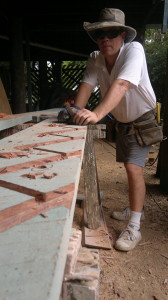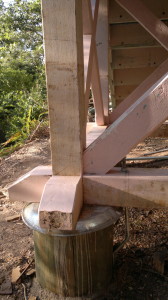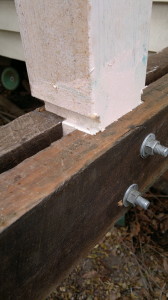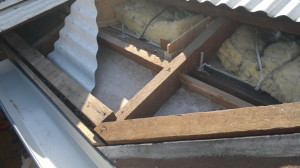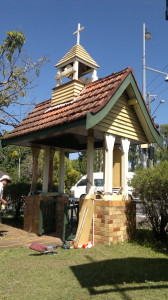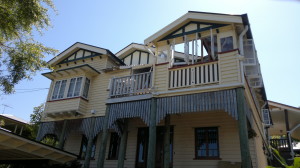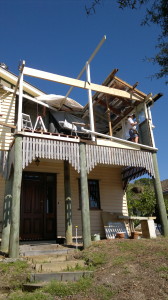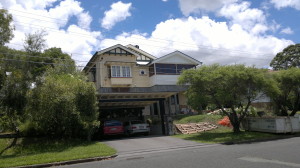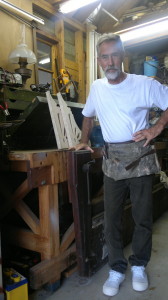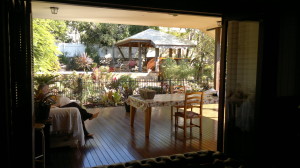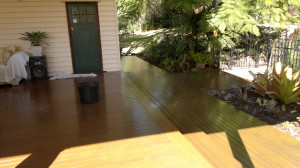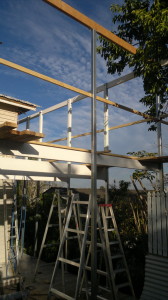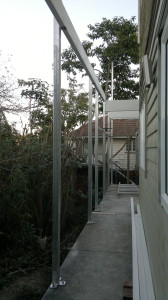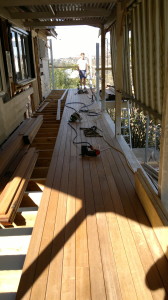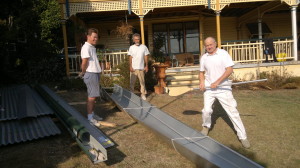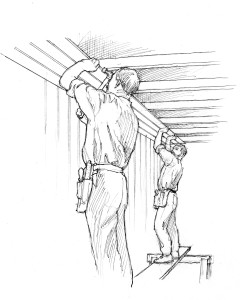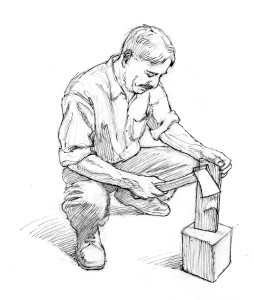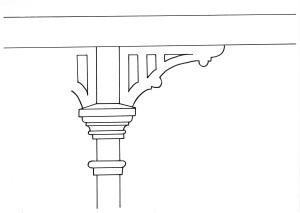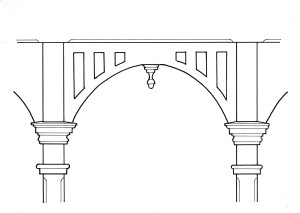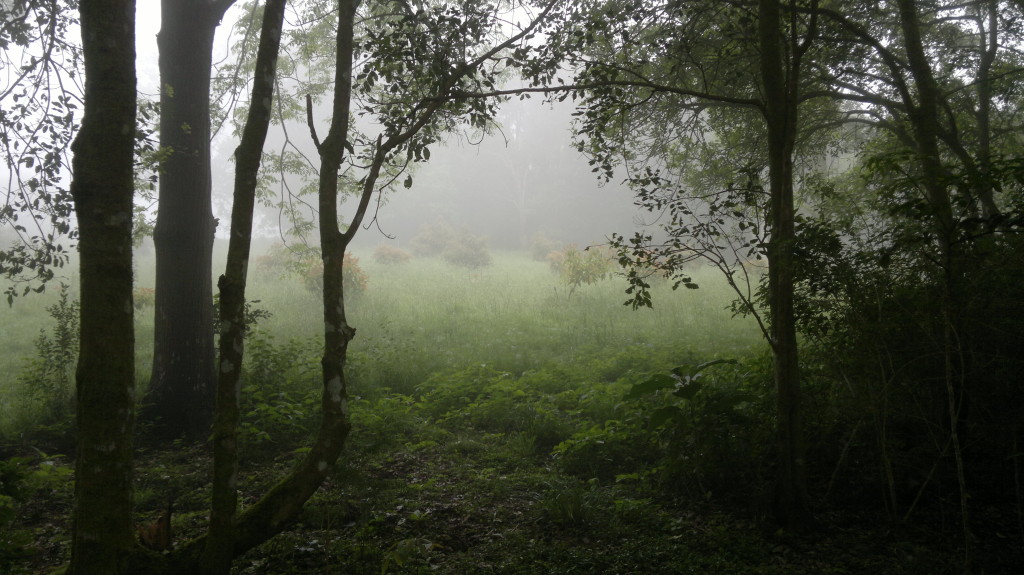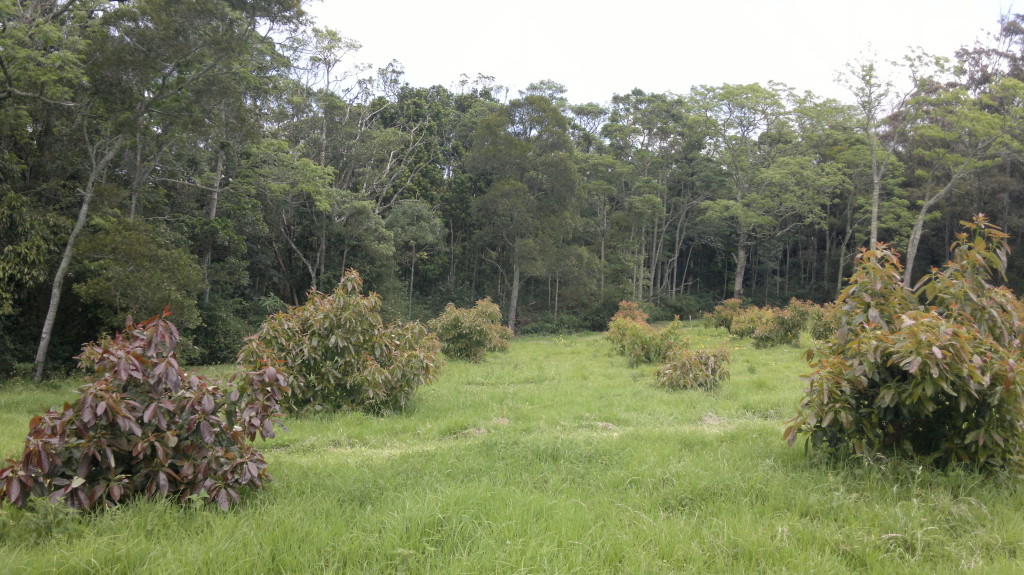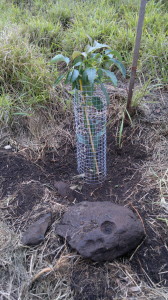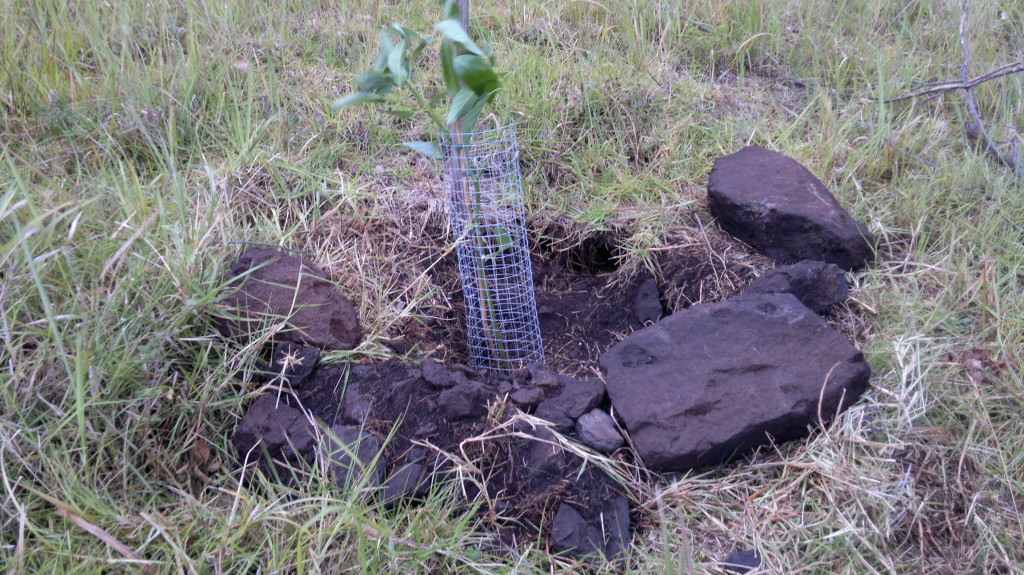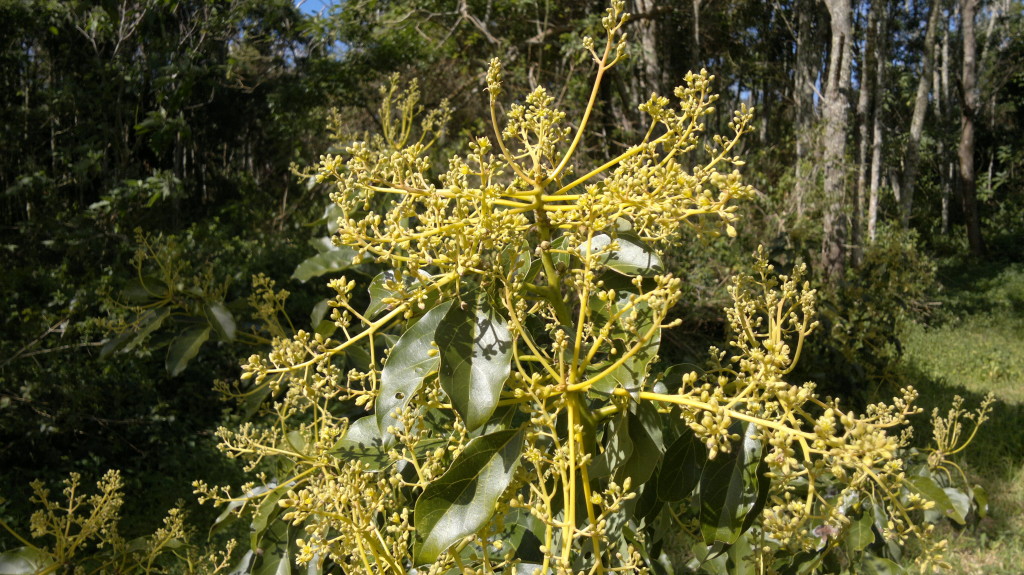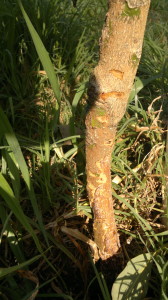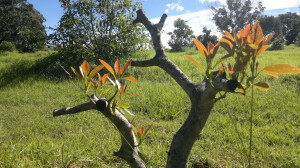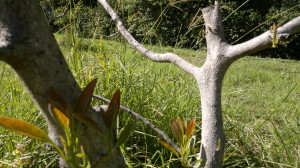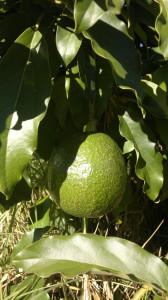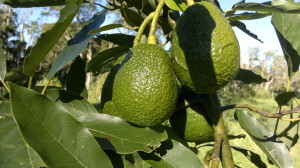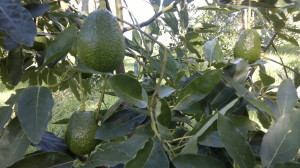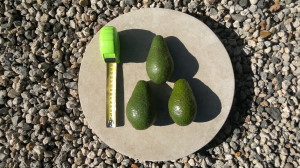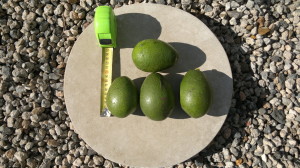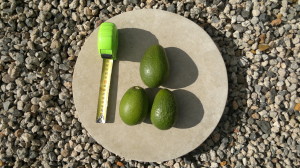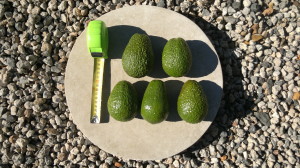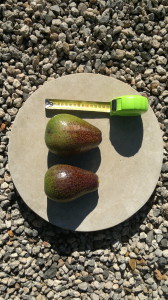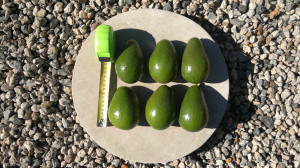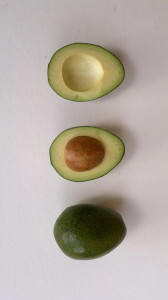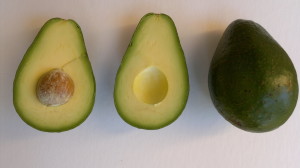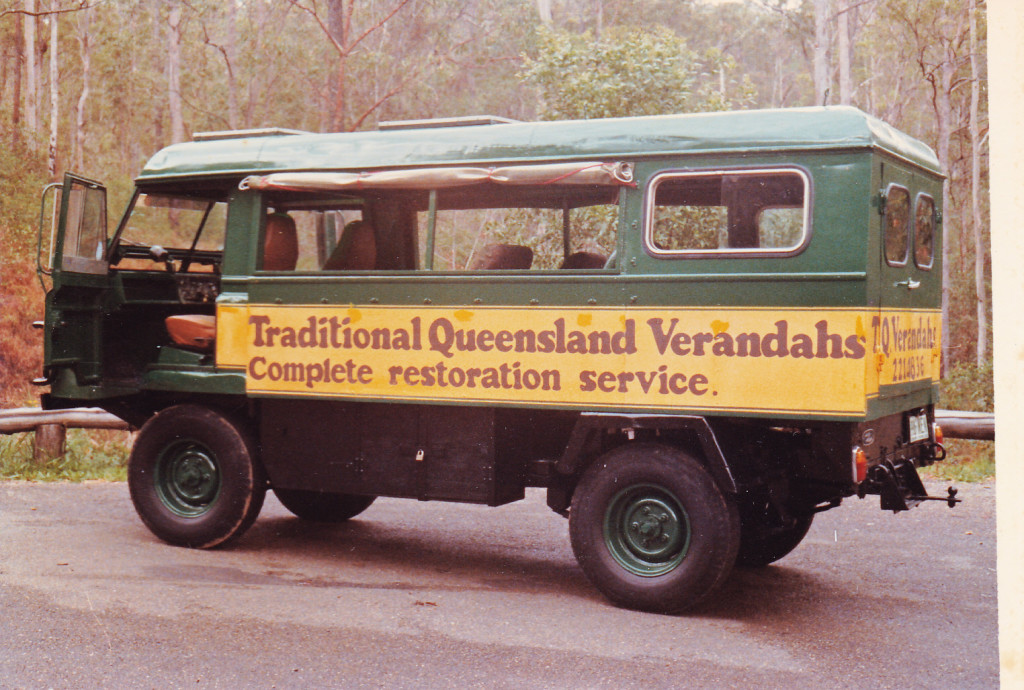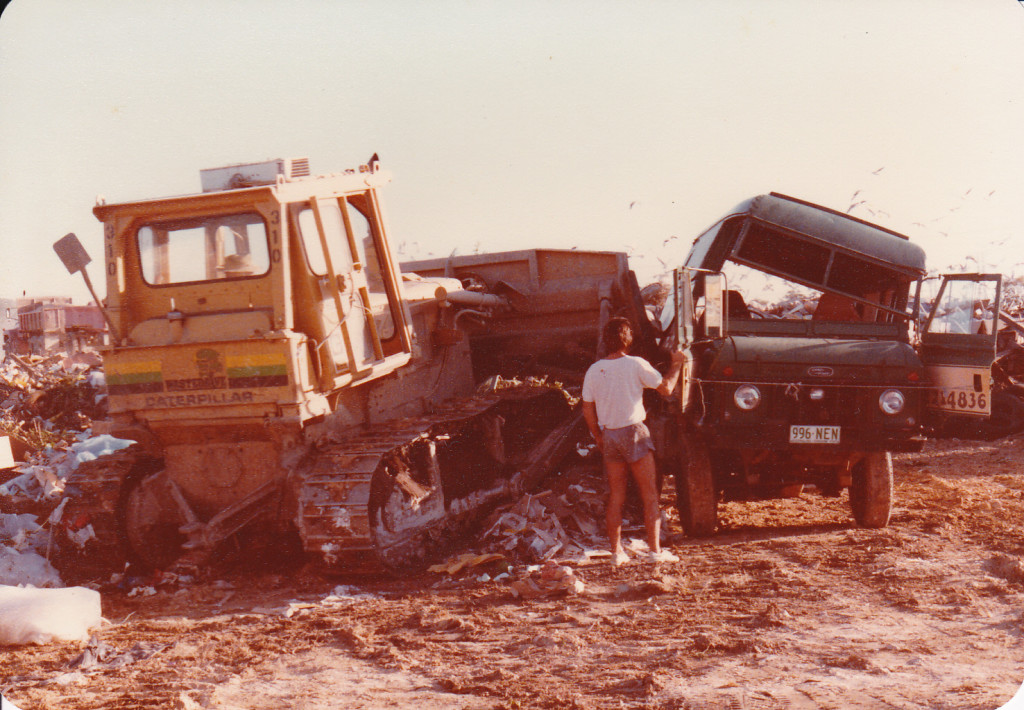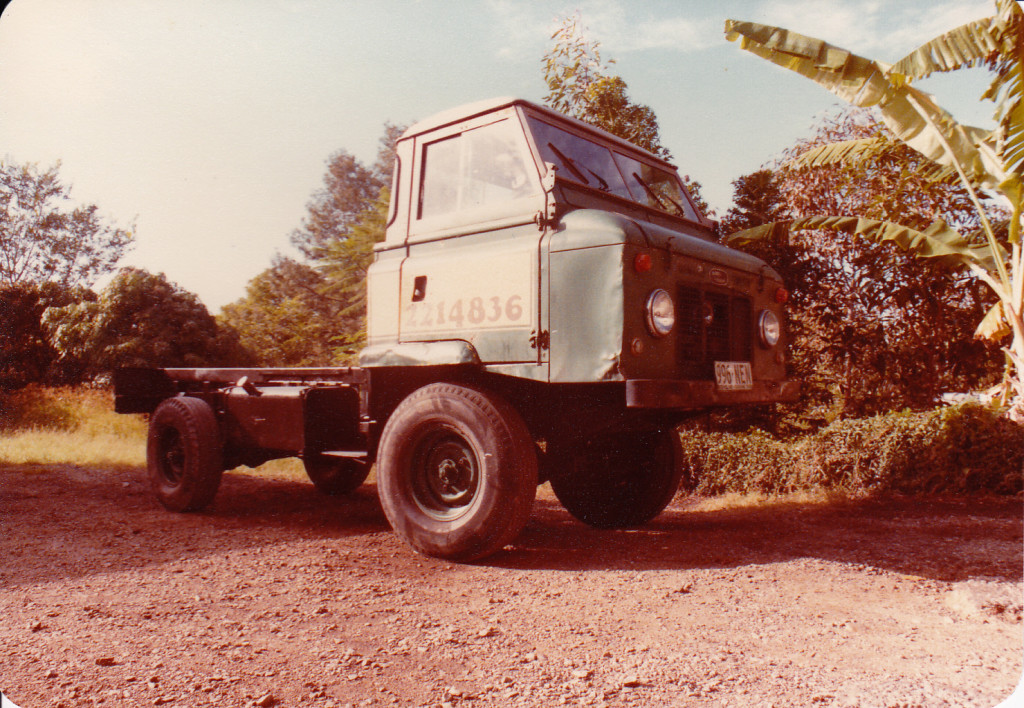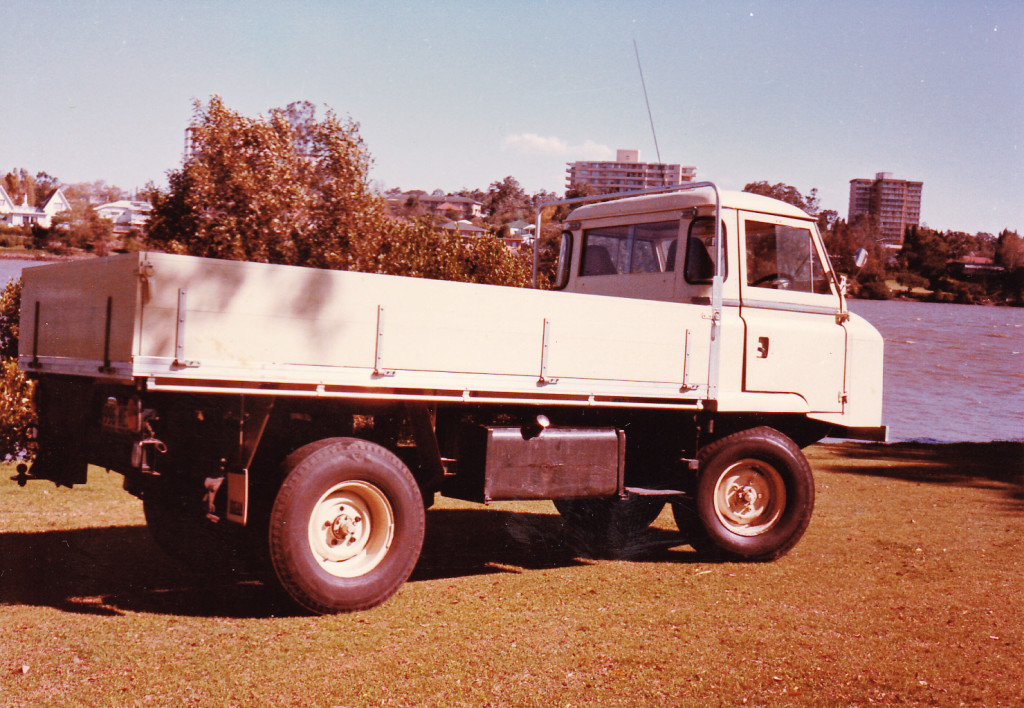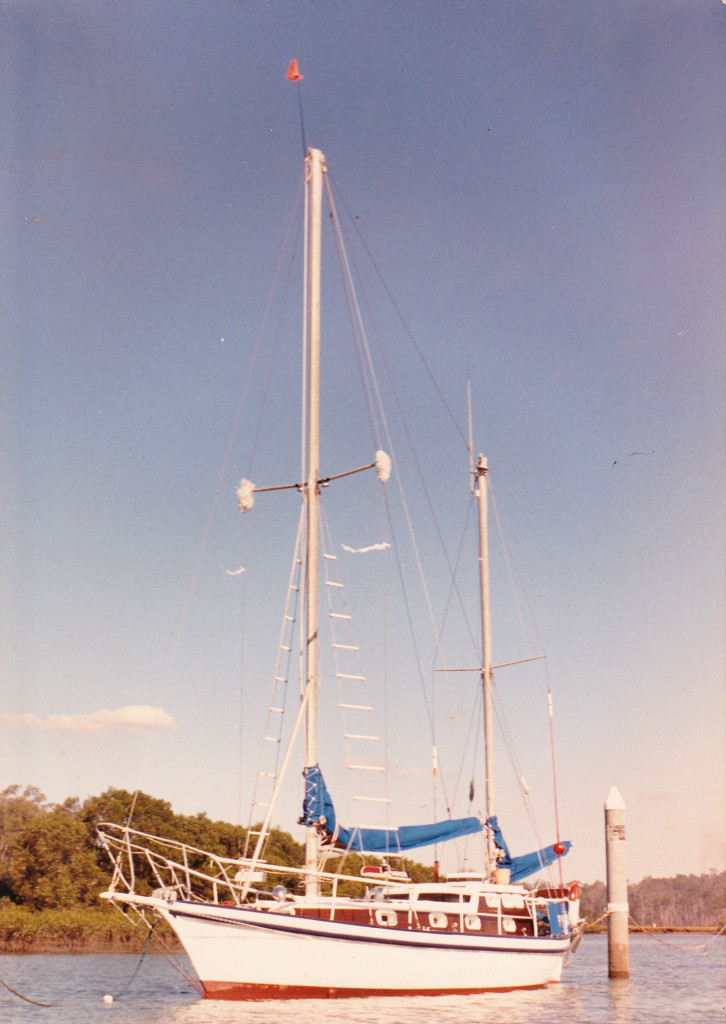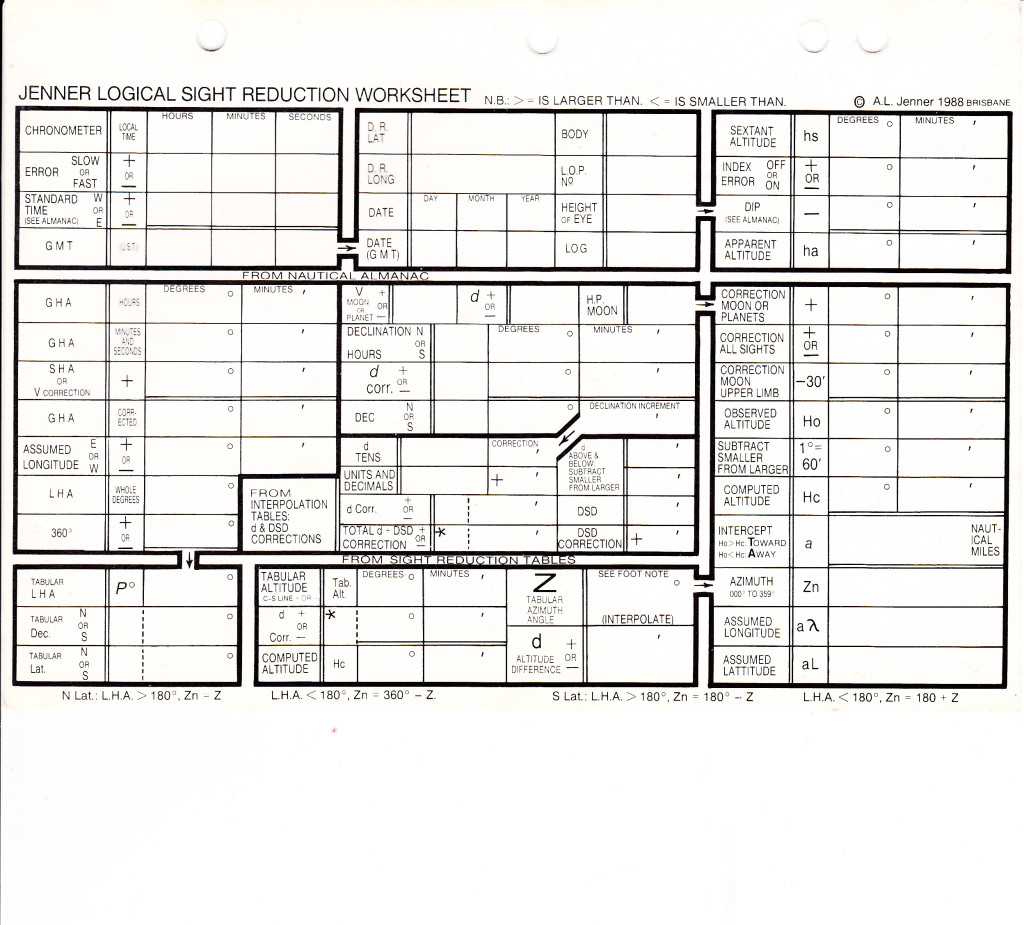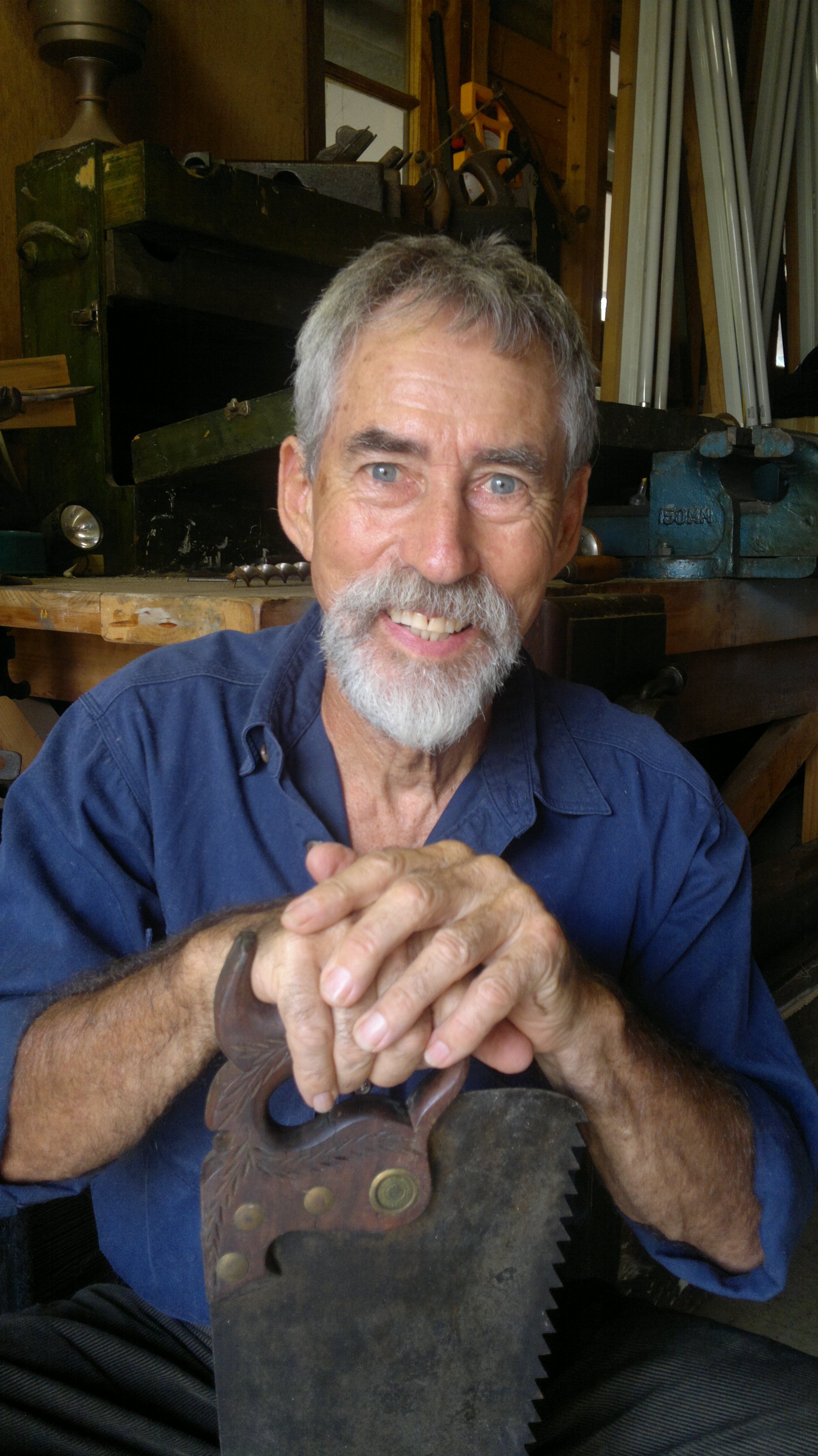Do you get frustrated at the wheel?
I don’t mean lack of sex. I mean, do the constant checks to traffic-flow drive you mad? There’s absolutely no point in either being in a hurry, or attempting to keep to a schedule, if you are driving through Brisbane suburbia. The constant blockages, hold-ups, un-synchronised traffic-lights, arbitrary stop signs everywhere, lack of intelligent road-marking, a total excess of road-marking, et cetera, all are infuriating to the sentient driver who has experienced the best in traffic control, and sees the worst in Brisbane, for all its wealth.
There is, without doubt, a definite ploy on the part of road-designers in Brisbane suburbs, to deliberately slow traffic to the extent of jamming.
Bottle-necks are deliberately built in dozens, if not hundreds of locations. Many nearside lanes have concrete obstructions and signs built on them, to the extreme danger of two-wheel traffic particularly, and the tyre-marks show all the hits and near-misses.
Traffic lights, except for one or two locations, are not synchronised, or worse, timed to offer red at each junction. An extreme case is in the city itself, where, whichever is the route of travel, no consecutive lights are ever green. Most lights are on primitive timers, having no relation to conditions at any time, changing by clockwork all 24 hours.
No traffic lights flash ‘Give Way’ at night, but continue operating despite no traffic being present. Lights on sensors are very few, some even replaced by timers.
The whole road design is gridlock-oriented, with busy roads blocked for kilometers during morning and afternoon rush; soon gridlock will actually take place, not by accident-blockage, but by traffic density.
We need a new broom at Traffic Control, to sweep away all the bottlenecks, stop- signs, infantile road-markings, frighteningly dangerous so-called ‘bike lanes’, all the paraphernalia of the garden-gnome mentality.
On one two-kilometer stretch of road near Toombul, there are SIXTY signs for the attention of drivers. Count the insane excess in your suburb.
OK, I’ve had my rant, now, the details. Some technology is required, therefore expense, but most changes are simple and practical, needing nothing more than a left-turn lane at all intersections and lights, for example.
1) Stop signs: Almost all eliminated, replaced by ‘Give Way’. If a vigil is kept at a stop sign, it will be noticed that very few drivers actually come to a standstill, when they can see the road is clear. Why stop, when the meaning of ‘Give Way’ is perfectly clear? A classic case of police cunning is at a stop-sign in a bizarre left-turn lane in Nundah, where hundreds are booked for not stopping dead at the line. Those who know the trap stop dead, though the road may be clear, only to be run into from behind by the poor bugger who wonders why the hell you stopped. Broken glass constantly litters that intersection.
2) Intersections: ‘T’ junctions and crossroads. For some unfathomable reason, a few years ago some wowser of design attempted with much success to eliminate all multiple lanes exiting intersections. Kerbs have been extended onto the road surface on the left, and islands on the right. In other words, no left or extra right-turn lanes. One vehicle turning right blocks the road for all those wanting to turn left, and vice versa. Why were these bottlenecks ever instituted? Who gains? Where is the safety factor?
3) Mid-road pedestrian islands: A good idea generally, but they must always be sited on a through road at the FAR side of a right-turn intersection, otherwise they act as an obstruction to waiting right-turn traffic, blocking the flow for straight-through traffic and causing danger to pedestrians. A childish mistake of road-design seen in quite a few places; who is responsible for this lack of professionalism? Or is it another deliberate and dangerous ploy?
4) Extraneous line-marking and painted ‘bike lanes’: That is, not actual bike lanes, safely separated from the motorised traffic by kerbs and barriers, but simply designated and extending into main traffic-flow by a line-marking. This horrendously dangerous practice gives some unthinking cyclists the impression that they are somehow protected whilst within their white line, and serves only to increase the statistics regarding boastful kilometers of spurious and non-existent ‘bike lanes’.
Throughout Brisbane there are line-markings between the kerb and the centre-line, tending to reduce the driving width and forcing on-coming traffic closer. To the left of this extra line is the supposed ‘bike lane’, although parking is generally allowed within it, rendering such designation erroneous and a death-trap for cyclists. A cyclist riding in the narrow gap between the line-marking and parked cars, the designated ‘bike lane’, is facing two severe risks.
The first is when a driver opens the car door without looking behind: a door projects nearly a metre into the cyclist’s path and is unavoidable without extreme danger from already-squeezed traffic; either the cyclist hits the door or, second risk, the passing truck hits the cyclist. In any case, two large semi-trailers passing each other in opposite directions seldom leave room for any obstruction, and the trucks always win.
The commendable attitude of road-design in making it safer for cyclists has been hi-jacked by the race for purely imaginary kilometers of designated bike tracks. This falsification directly endangers cyclists and has caused deaths.
Cyclists in today’s traffic are all at risk of death or severe injury, no matter how careful and aware are other road-users. This is an undeniable fact, exacerbated by the inculcation in the minds of cyclists of their right-of-way and right to use the public roads.
A wise cyclist will take none of this for granted, but will look out for her own safety in a most dangerous environment, where nobody is necessarily at fault when an accident happens.
A wise cyclist will not wear headphones.
A wise cyclist will always look behind before pulling out to pass a parked vehicle.
Wise cyclists will never ride two-abreast: those days have gone 50 years ago.
A wise cyclist will never feel protected by road-markings. A supposed right-of-way is not a safe right-of-way.
Who the hell teaches cyclists safe road-use in today’s traffic? Anyone?
Could you imagine, if two-wheeled transport had never been invented, and had just become a circus-act, that trick of balance would ever be allowed on the public road?
5) Zebra Crossings: Here is a mystery. In order to accentuate the appearance of a pedestrian on a crossing, white lines must cross the road from side to side. Any interruption of those lines immediately signals something crossing. By having the stripes the zebra way leaves gaps to camoflage pedestrians. Any artist would offer that information: yet no-one has considered it. Furthermore, illuminating crossings from above rather from the side actually helps to render pedestrians invisible, an obvious fact any stage-lighting expert would know. Think dark, rainy nights.
Building out kerbs and signs into the road surface at crossings does not safeguard pedestrians but certainly does endanger two-wheel riders. All obstructions into traffic lanes must be considered un-necessary and dangereous, particularly and essentially in rain, darkness, and wind. The multiple tyre-marks attest to the danger.
One more remark on mad pedestrians with the indestructible god-syndrome: why do some pedestrians dress in black, walk on the road at night rather than the footpath, facing away from the oncoming traffic, whilst pushing prams. They and their babies WILL die.
Two remarks: Why do mothers push their prams and babies out into traffic, from behind parked cars, so that they can see if anything is coming?
Just outside our house, in the middle of the night, someone drove into a parked car, pushing it 50 metres down the road and onto the verge. Black-clad road-walkers beware.
Again, crossing-users now feel they have the right to safety, and many step off the kerb at speed with no awareness or concern. Where is the education?
6) Now, the costly fix: traffic lights: the bane of drivers in cities with no technology, like Brisbane. I say costly, but really the technology is cheap and has been available for over 50 years. The fix, to everyone’s happiness and contentment, is permanently synchronised lights in both directions, on all through roads, at all times, and linked to the speed limit, whatever that may be, and the limit may have to be slower.
How often have we, as responsible law-abiding drivers, sat fuming at a red light on a totally deserted cross-road, waiting, waiting, for the primitive clockwork to operate in our favour. How often have we stopped at a red light instigated by a solitary pedestrian, which light remains red even whilst the pedestrian has walked 100 metres and out of sight? All these irritations have been cleared away in other cities where traffic-flow is a science operated by professionals.
Admittedly, some small sections of roads do have lights synchronised at certain times, so the traffic controllers do know about the fix, apparently.
In case anyone is unsure as to what synchronised traffic-lights do……..imagine you have waited at lights from a side-road, and are turning onto a main road. You may also have to wait at the next red light on the main road, but from then on, if you stick to the speed limit, and drive neither too fast nor too slow, every traffic light will turn green for you, for ever, to the distant horizon, into the setting sun of permanent delight. A motorists paradise, here on Earth.
Imagine our main Brisbane arterial roads free of red lights. Sure there is a cost, but it’s nothing compared with building a freeway. When I was a kid, as an exchange student passing through Hamburg in my host’s car, I was astounded to see all the traffic lights miraculously changing to green as we approached them, for mile after mile. I thought it was magic, or co-incidence, more likely, and shouted in surprise at each green, Wow, another one. Vhy ze surprise, said my hosts, zey are synchronised, off course. That was in 1960.
Every traffic-light must have a ‘Left turn at any time’ sign, and lane, if possible.
7) Roundabouts. Brilliant. Invented 100 years ago, but virtually unknown in Brisbane; the few that exist are marvels of efficiency, and work so well even when overloaded, because they make sense. Drivers, most of them, understand the procedure, patience is not strained because there is no wasted road-space, everyone has their turn. Except…….the wowsers can not leave well-alone. Some of the few smaller roundabouts actually have bottlenecks built into them, the footpath deliberately widened to block off the left-turn lane. Deliberately. No possible explanation could be valid, and no doubt fatuous mumblings about ‘safety’ would be mouthed.
Roundabouts could satifactorily take the place of 90% of traffic lights. We have seen what happens when a functioning roundabout is replaced by a dozen traffic lights: endless waiting, queues of vehicles polluting the local businesses with exhaust-gas. See West End, a classic example. It can only be assumed that the department responsible for traffic lights relies on the proliferation of meddling to secure their existence.
The installation of each new set of lights guarantees that it will take more time to get through that intersection: Guarantees. A roundabout in the same place actually speeds flow. The examples are endless.
8) Parking. In this era of the vehicle, parking is at a premium, and all parallel-parking should be fazed out in favour of diagonal, drive-in. Not reverse-in. Reversing into a space necessarily holds up traffic, though it makes for a quick getaway. Backing out of a space is performed while the road is clear: no hold-up.
The wide space between the kerb and building-alignment is a hangover from pedestrian days and is wasted in cities, except as a place for dogs to shit. This space must now be used for parking and footpath.
9) SPEED LIMITS
A visitor to Brisbane, and a great proportion of residents, have no idea what the suburban speed limit is in any given location. Many assume that if they can not see a sign, it’s legal to do 60 km/hour, but no. If a speed sign can not be seen, and one has not been passed previously on that road, to avoid fines and point-loss one must drive at 50km/hour, no matter how ridiculous that sounds.
The fact is that there is no way of knowing what the speed limit is until a sign appears ahead, and signs are often two or more kilometers apart. Only local knowledge from previous trips will help, and strangers must be left in the dark.
Almost every driver on un-signed roads does 60 or more, though the limit on those roads is actually 50. The speed limit is 50 unless otherwise signed. Who knew that?
The policing of speed limits is now virtually without lee-way. Two km over will get you booked, even though many speedometers on modern cars are not accurate to within 5 km/hour. Not long ago the lee-way was about 9km/hr.
A consequence of this is that so many folk have been booked, losing licenses and cash, that traffic now flows at 10km below the speed limit, with dangerous bunching and frustration. It is not safe to drive with attention constantly on the speedometer, and cruise-control, if available, needs adjusting after every braking.
It may be an urban myth, but I recently heard that where the speed limit is, say, 100km/hr, to actually drive accurately at that speed is to break the law: 99km/hr is the legal maximum. Given that any speedometer is certain to be more than 5km/hr inaccurate, all this pettifogging is bullshit, my word against yours, an un-proveable situation biased on the side of outrageous fines, inflicting the heaviest penalties on those whose wages, if any, are breadline. So, depressing though it is, we all may well consider that all speed limits are 10km/hr LESS than signed, or risk our children’s food for a month.
Within the last month a remarkable thing happened. In my neighbourhood, a stop-sign was removed. This sign stopped the traffic for forty years on the main through-road, in favour of the little-used side road. It probably raised millions in fines. This action was taken out of sheer necessity: traffic was banking up for a kilometer, blocking many access roads and causing local gridlock. Now traffic flows freely even at the busiest times. The cost of a bit of road-marking and the removal of signs was minimal, and saved time and frustration for thousands of drivers. Why had it taken so long, and why aren’t all such bottlenecks removed immediately? There are hundreds throughout Brisbane. On your drive to work, count the number of unnecessary blockages which could be fixed by give-way signs, roundabouts, left-turn lanes et cetera.
By the constant work taking place on our suburban roads, for example, line-marking, new kerbing, new traffic-lights, it can be assumed that there is a department in charge of these operations. The principal aim of such operations should obviously be to speed traffic-flow safely, remove obstructions, and keep the road surface in good condition. These three specifics seem to come last on the list of projects. Why? Who is in charge?

